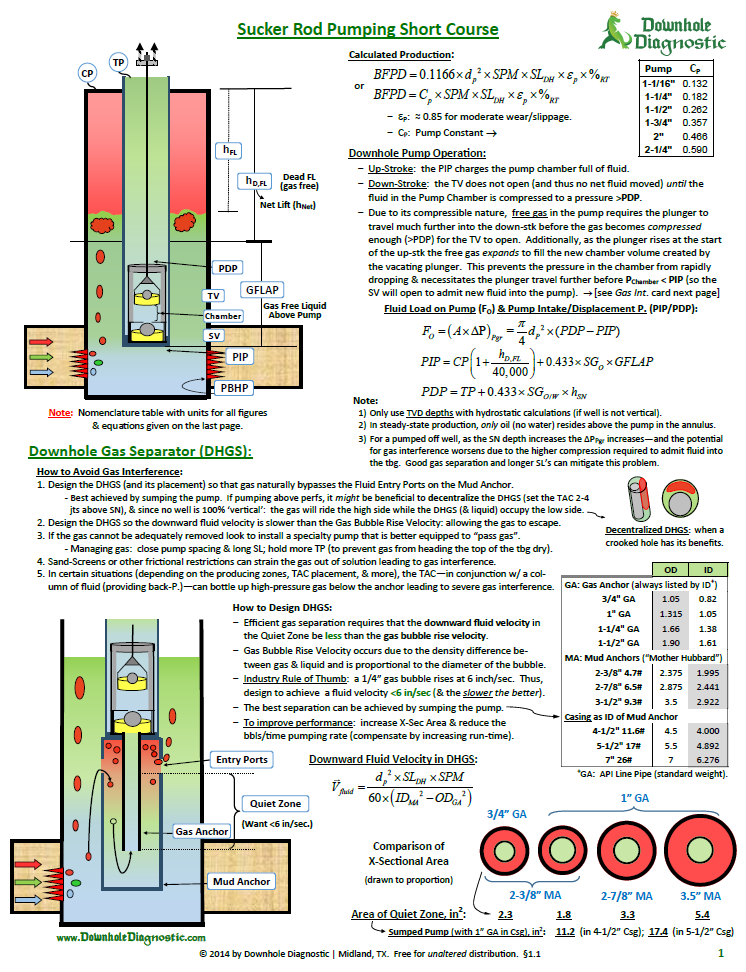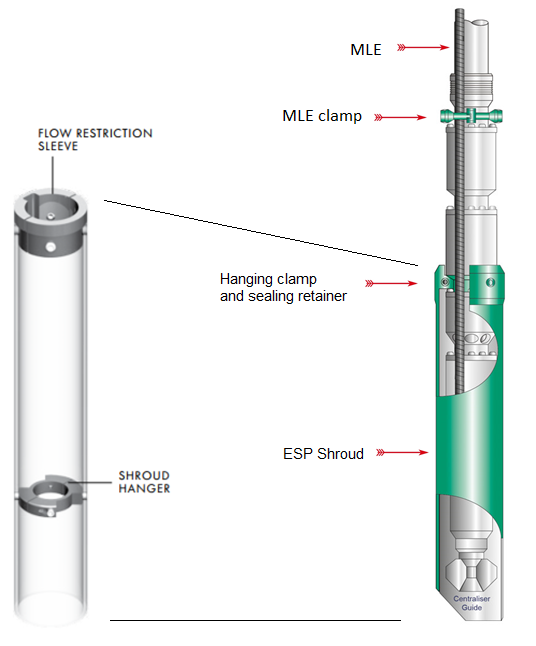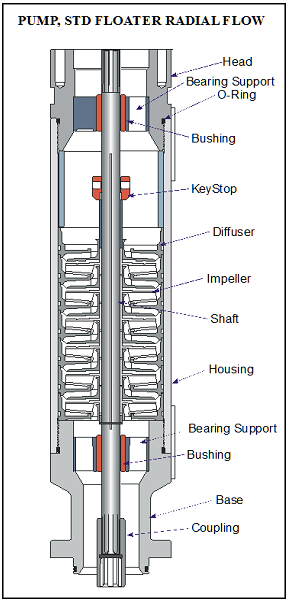Interpretation of Dynamometer Records – Quick Diagnostic Reference
The table below gives a quick diagnostic reference for the interpretation of dynamometer records:

The table below gives a quick diagnostic reference for the interpretation of dynamometer records:

This article will give you a summary of all what you need to know about sucker rod pumping system:

The ESP motor Shroud is a cylinder fitted around the Motor, Protector and Intake sections of an ESP. It is designed to provide cooling to the motor when fluid velocities are below minimum by reducing the annular area between the ESP and the casing bore.
The Shroud is simply constructed with a length of tube long enough to swallow the Motor, Protector and Intake sections, and is bolted with a split clamp unit to first ESP neck located above Intake. The MLE cable is run through the shroud. The shroud assembly is made up of a jacket (a length of casing or pipe), a hanging clamp and sealing retainer for the top, and a centralizer for the bottom.
Above the Shroud, an MLE Clamp is normally fitted to secure the MLE to the Discharge Head. At the bottom end, a Centralizer Guide is fitted to help secure the ESP section within the Shroud. The Shroud can be manufactured from a thin casing, stainless steel or fiberglass.

The pump shaft is coupled to the motor shaft through the intake and seal shafts. It transmits the rotary motion from the motor to the impellers of the pump stage. Care must be taken when selecting the shaft material for each application. There are two main considerations: Shaft Strength and Well Fluid Composition.
The diameter of the shaft is minimized as much as possible because of the restrictions placed on the pump outside diameter. The pump power requirements determine if a normal, high-strength, or ultra-high-strength shaft is needed. Most manufacturer’s catalog information specifies what each shaft can handle.
The well fluid composition determines what metallurgy should be used (depends on corrosion protection required).
Operating a pump outside the manufacturers recommended operating range for extended periods of time will cause excessive wear on the pump stages due to down thrust or up thrust. Thrust wear causes the shaft to vibrate and transfer adverse vibration pulses to other system components, such as the motor protector where eventual fluid entry into the motor may result in a motor burnout.
To stabilize and support the shaft, most pumps contain two shaft bushings; one at the top and one at the bottom of the pump housing. Pump shafts may be up to 30-feet in length supported with one or two shaft bearings, depending on the manufacturer. The hub and wear rings on the impeller function as journal bearings against the diffuser. Because journal bearings are made from Ni-resist they tend to be very soft and susceptible to abrasion wear. To mitigate radial wear problems shaft stabilizer bearings can be used.

The term “centrifugal pump” has been used to describe a wide variety of pumping applications and designs throughout the years. A Centrifugal Pump is a machine that moves fluid by spinning it with a rotating impeller in a diffuser that has a central inlet and a tangential outlet. The path of the fluid is an increasing spiral from the inlet at the center to the outlet tangent to the diffuser. The fluid rotational motion is the result of the concept of centrifugal forces.
The pressure (head) develops against the inside wall of the diffuser because of the curved wall forces fluid to move in a circular path.
